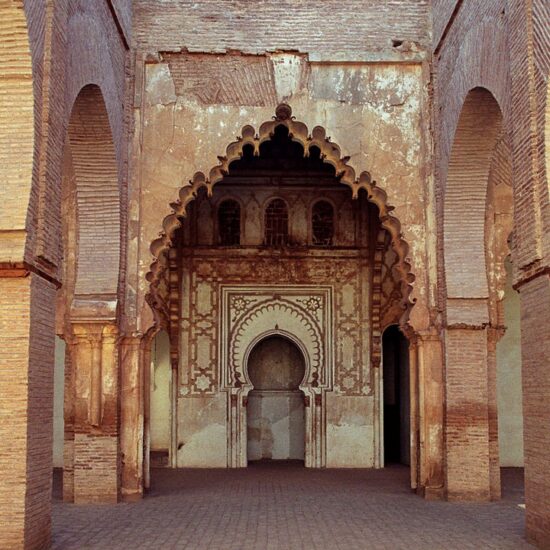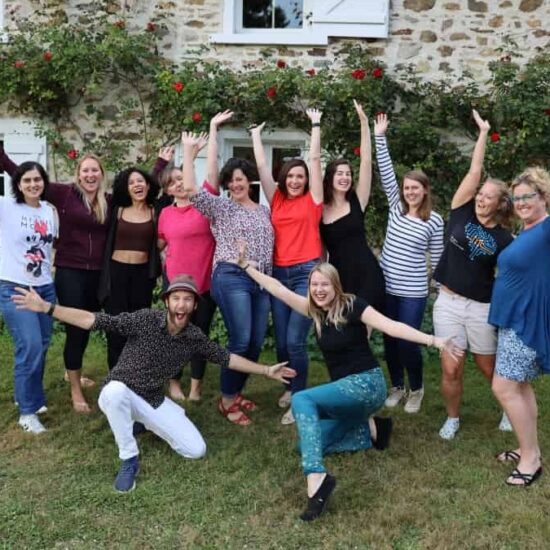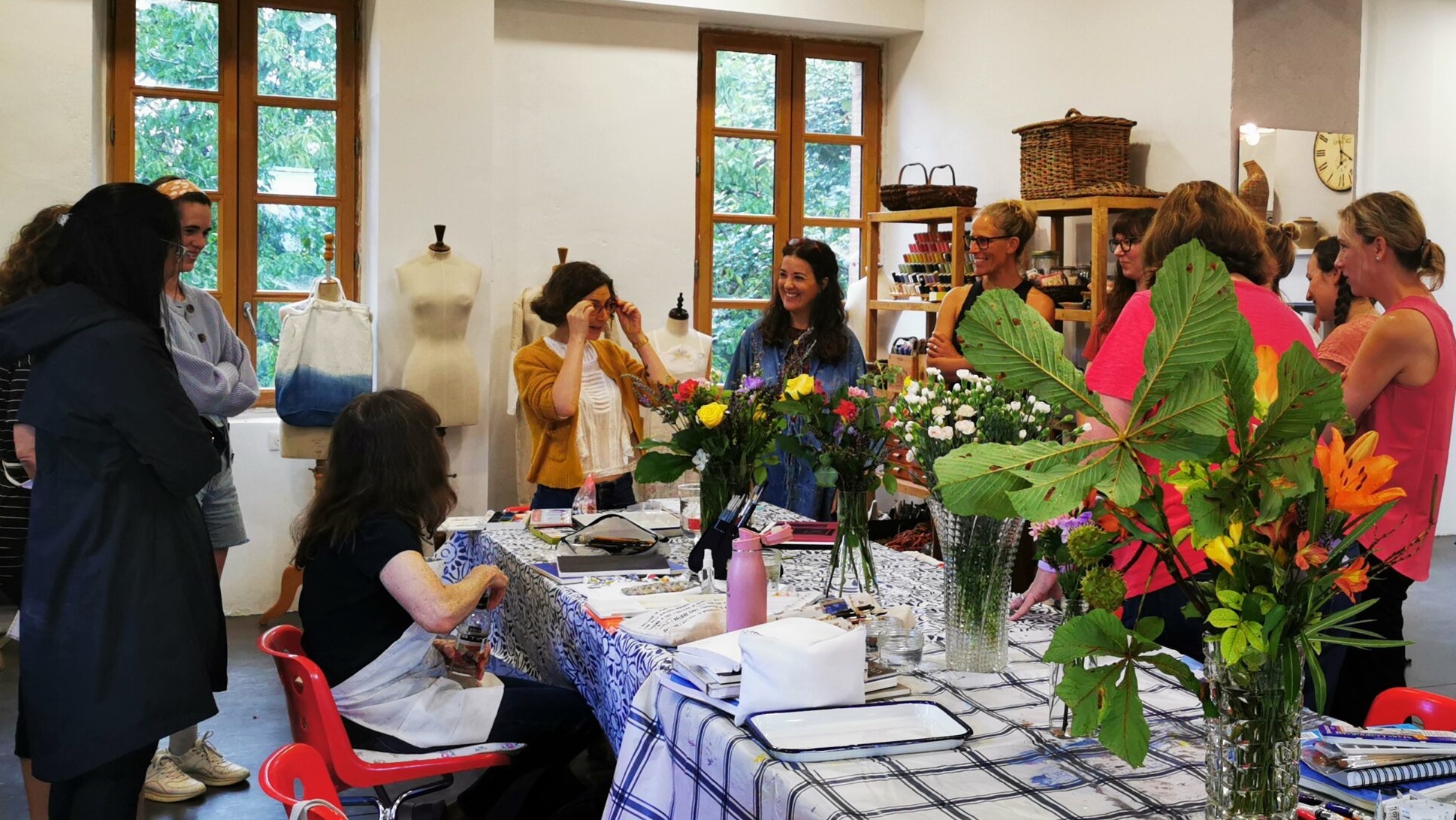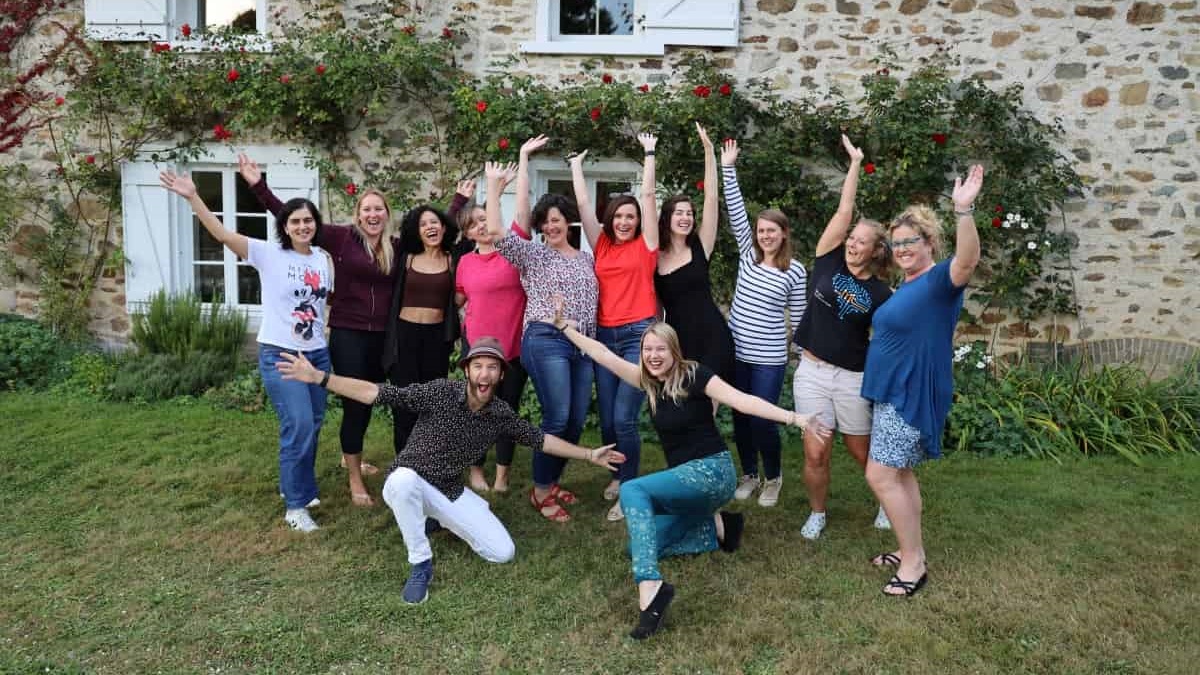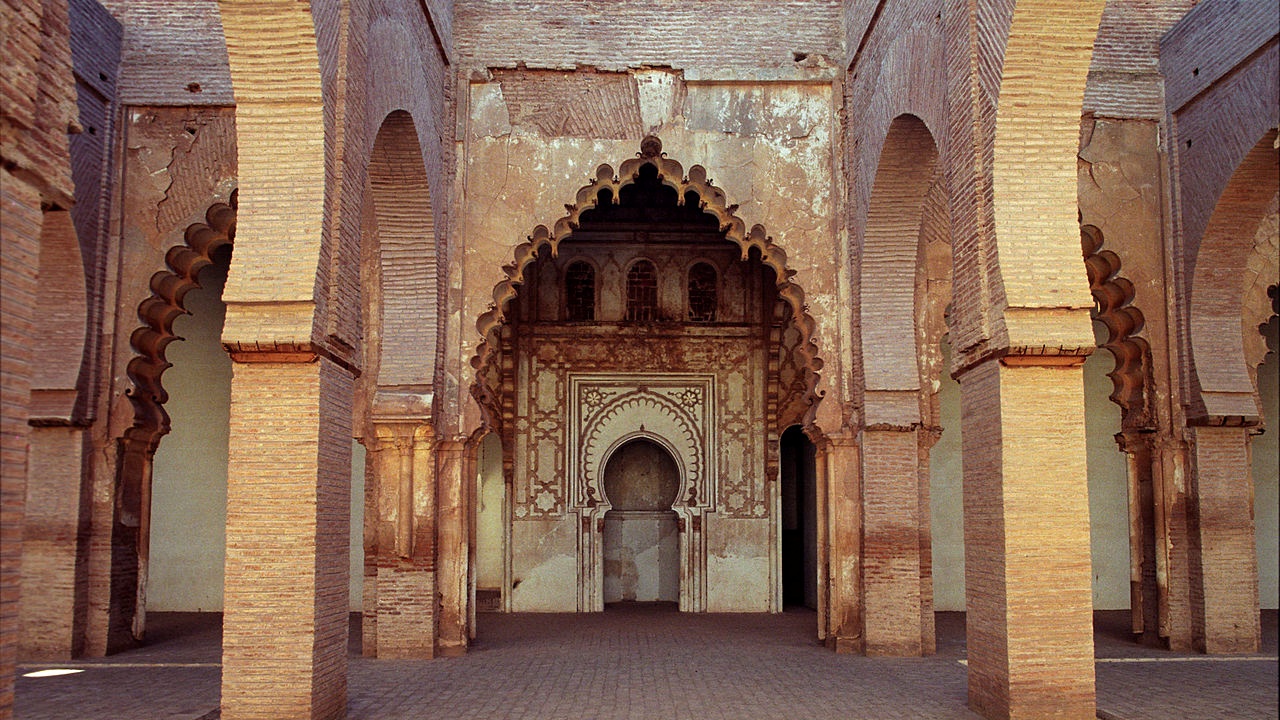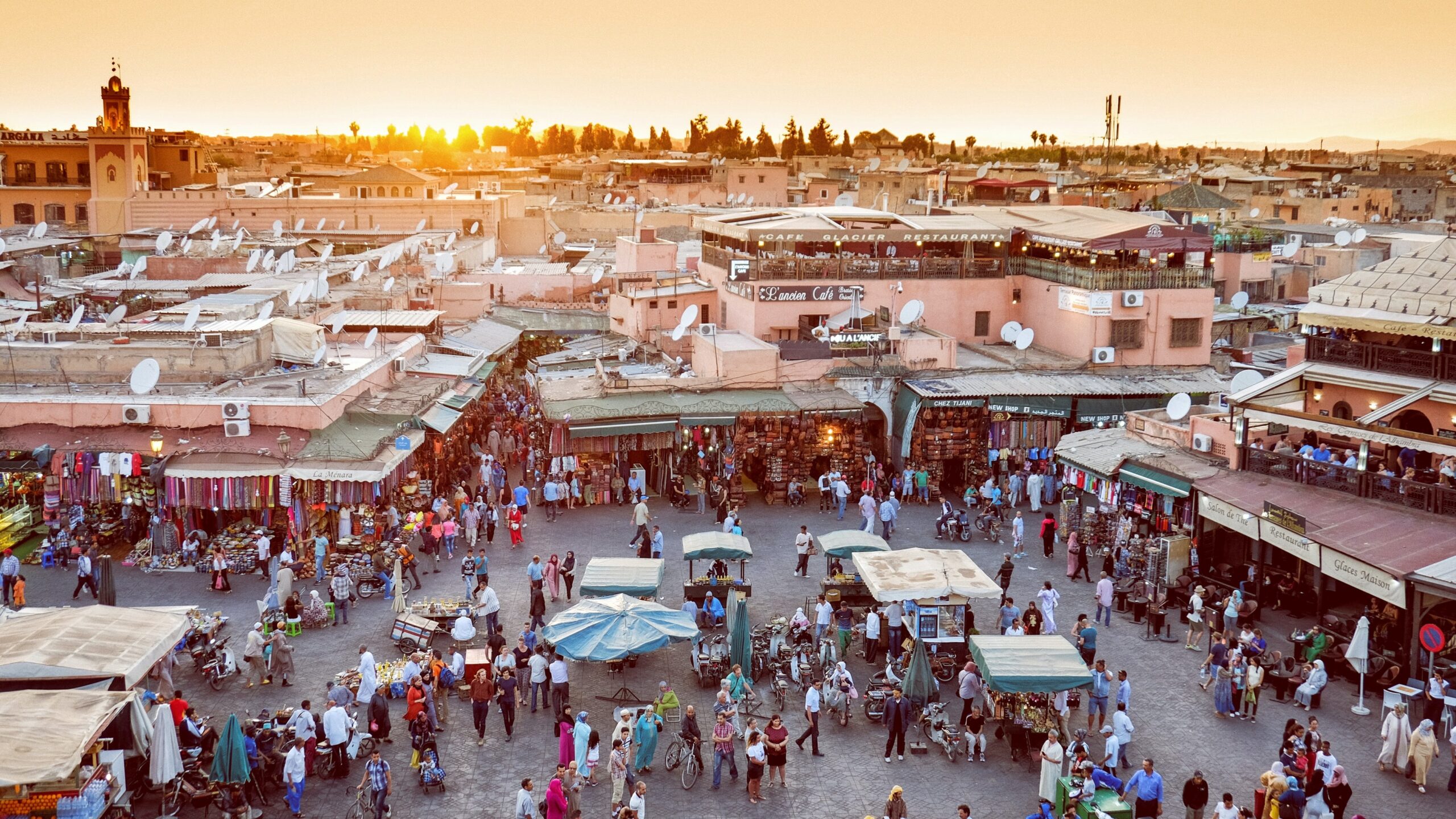
Five Things to See and Do in Marrakesh, Morocco
Marrakesh is one of the top travel destinations in northwest Africa. This fabulous Morrocan city will dazzle and enchant every visitor with its effortless combination of old and new. The former imperial city is home to many beautiful palaces, mosques, gardens, chaotic souks, and delicious foods. Soak in the atmosphere of the noisy, colorful streets that encapsulate Morocco’s vibrant soul. If you have a couple of days to spend in Marrakesh before your next UpTrek art retreat, here are some of the best things to see and do in the “red city”.
1. Visit the Medina Souks and Jamaa el-Fna square
The ancient part of Marrakesh, the medina, became a UNESCO World Heritage site in 1985. The medina is surrounded by 19 km (11.8 miles) of powder-pink beaten clay ramparts, giving this part of the city the name of “the red city”. The medina is a fascinating place filled with souks, gardens, rooftop terraces, mosques, and historic buildings. Get lost among the colorful streets of the medina’s vibrant souks for an authentic Moroccan experience. A souk is a street marketplace where you can buy a huge variety of products, from leather bags to spices, from silver and gold to clothes, modern products, and delicious food. There, you’ll see Berber dancers, donkey carts, smell fresh orange juice, and exotic spices, and hear the sounds of snake charmers over the cries of vendors selling their wares. Don’t be afraid to bargain for your items, as the practice is commonplace in Morocco. Typically, you should be able to get up to 50% off any item bought in the souk. Taste traditional Moroccan deserts, try the fragrant argan oil or a glass of exotic fruit juice in one of the medina’s many souks.
The heart of the medina is the Jamaa el-Fna square, itself a vibrant marketplace. Located near the 12th-century Kutubiyyah (Koutoubia) Mosque, the Jamaa el-Fna square is Medina’s most famous marketplace. Here, every day is like a carnival. Stroll between snail vendors, soothsayers, acrobats and conjures, musicians, and slapstick acting troupes performing various numbers for your entertainment. At night, the Jamaa el-Fna square comes alive with lights, music, and good cheer. For the ultimate experience, enjoy the energy of Jamaa el-Fna square from above. Head to one of the many rooftop bars around the square, order a traditional mint tea and soak in the festive atmosphere.
2. Admire the El Badi Palace and the Bahia Palace
Marrakesh is the first of Morocco’s four imperial cities. For a long time, it was the capital of the kingdom with the same name, and remnants of the past can still be found in the city’s palaces: the El Badi Palace and the Bahia Palace. The El Badi Palace (translated as “The Incomparable Palace”) is a ruined palace in Marrakesh, constructed in the 16th century by Sultan Ahmad al-Mansur. As its name suggests, the now-ruined palace was a glorious sight when it had just been constructed, with 300 rooms decorated in gold, turquoise, and crystal, with luxurious swimming pools and lush gardens. Now, the palace is a museum with several detached compartments showcasing Islamic art and artifacts such as the Koutoubia Minbar (pulpit) made of cedarwood and encrusted with small writing in gold and silver. Don’t miss the dungeons and the spectacular view of Marrakesh from the top of the walls of El Badi Palace.
The Bahia Palace (translated as “The Beautiful Palace”), the other palace in Marrakesh, is a different experience than the El Badi. Built for the sultan’s Grand Vizier Ba Ahmed ben Moussa in the 19th-century, the building has been excellently preserved and allows visitors a more vivid journey back in time through its colorful mosaicked arcades. The Bahia Palace is one of Marrakesh’s most imposing buildings, with 150 rooms, a 100-acre garden, beautiful patios, and terraces. The highlight of a visit to the palace is seeing the harem of Abu Bou Ahmed’s four wives and 24 concubines. Admire the Islamic and Moroccan decorated ceilings of this impressive palace, and take a stroll through its lush gardens.
3. Take Pictures in Jardin Majorelle
Marrakesh is sometimes called “the garden city” in honor of its world-renowned gardens. Marrakesh’s gardens symbolize paradise. They are a great space to escape the desert atmosphere and the busy streets of the city. Of these, one of the most popular gardens to visit as a tourist is the exotic Jardin Majorelle. Designed in 1924 by French orientalist landscape painter Jacques Majorelle, the gardens took over 40 years to complete. The gardens feature a vast collection of exotic plants and flowers divided into different areas: the cacti garden, the aquatic plants, the garden plants, and the palm trees. One of the most popular spots in the gardens is Jacques Majorelle’s colorful villa, later owned by Yves Saint Laurent. Many tourists choose to stop by the villa, admire its unique appearance and take stunning pictures. Within the garden, you’ll also find the Berber Art Museum of Marrakesh, exhibiting extraordinary Berber clothing, jewelry, crafts, and artworks. On your way out, don’t forget to stop by Boutique Majorelle, a gorgeous shop offering a variety of stylish accessories. Here, you’ll also find books about Moroccan history, Marrakesh, and one of the best-known designers in the world: Yves Saint Laurent, whose ashes have been spread across the gardens and whose museum you can find next door.
4. Explore the Yves Saint Laurent Museum
Located next to Jardin Majorelle, you’ll find the Yves Saint Laurent Museum, dedicated to the work of legendary fashion designer Yves Saint Laurent. A veritable jewel of contemporary museum architecture, the museum pays homage to authentic Moroccan buildings, with rammed-earth walls, a traditional color palette, and an Arabian inner garden. The museum offers extensive insight into the life and work of Yves Saint Laurent, the famous designer who came to Morocco in 1966, fell in love with the city, and decide to buy a house here. His Moroccan home later became a great source of inspiration for his creations.
The exhibition is not designed like a classic retrospective exhibition where the evolution of the de couturier’s works is presented chronologically. Instead, the exhibition is like a journey through the mind, spirit, and creative genius of this great designer. The displays are diverse, highly colored, with models taken from four creative decades and combined with various pieces of jewelry and accessories to create an emotionally charged experience. The museum is created with great attention to detail when it comes to the enjoyment and visual comfort of visitors. The dramatic exhibition concept references the theatre and special lighting fixtures allow for the brilliant tones and textures of the iconic haute couture models to blossom. After a dazzling stroll through the exhibition, stop by the museum café and bookshop to indulge in a few quiet moments before returning to the bustling streets of Marrakesh.
5. Stay in a Traditional Riad
If you’re only staying in Marrakesh for a short time, a great way to experience the enchanting culture of the place is to book your stay at an authentic riad in the medina. For many travelers coming to Morocco, the visit is as much about their accommodation as it is about the city. A riad is a traditional Moroccan house or palace with an intimate interior garden or courtyard, a true oasis from the busy streets outside. Charming, historical, and atmospheric, riads are the ideal place to stay while traveling through Morocco. In recent years, many riads in the medina have been restored and opened as boutique hotels. Some of these hotels are a blend of contemporary style with traditional design, while others are almost palatial in their Moroccan artisan features and historic ambiance. Some riads even offer luxury amenities such as plunge pools and on-site hammams (similar to Turkish baths), and many feature a rooftop terrace with spectacular views over the city skyline. In Marrakesh, you can find riads fit for every budget and desire, so you’re sure to find the perfect one for you.
























